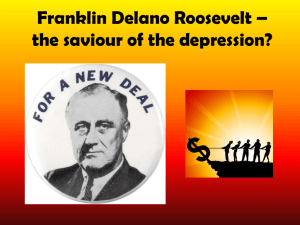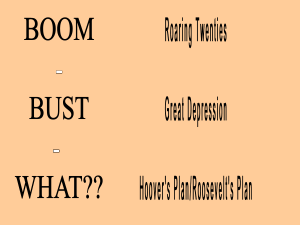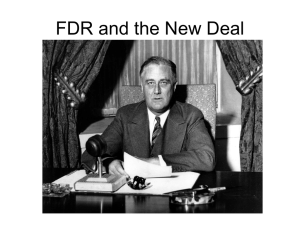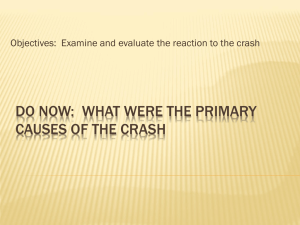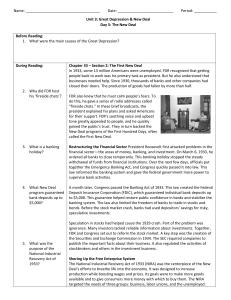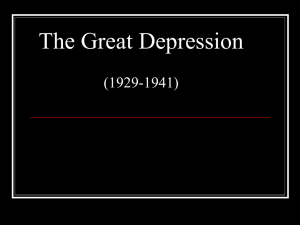The Great Depression 1929-1939
advertisement
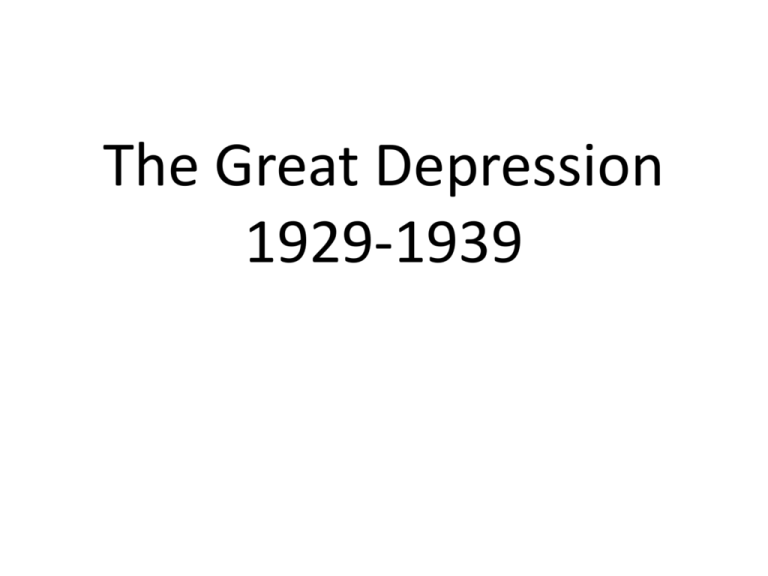
The Great Depression 1929-1939 Early years • Hoover’s belief was to do nothing drastic, let the economy follow a “natural” cycle. By early 1932, the Depression was at it’s worst. Hoover reaches his low point when he orders the Army to remove WWI veterans from Washington DC, they were the “Bonus Army” Election of 1932 • Hoover is the incumbent Republican • He runs on “staying the course” • Franklin D. Roosevelt is the Democrat He promises “Bold New Programs” FDR wins in a landslide March 4, 1933 FDR inaugurated the 32nd president of the U.S. "The only thing we have to fear is fear itself." The New Deal • FDR’s plan to fix the problems of America, create parity for all. Roosevelt’s 3 R’s RELIEF • Give people a means of daily subsistence, food, clothing and shelter. RECOVERY • Get the economy going again, new jobs, extended work programs, improving infrastructure. Massive building programs REFORM • Change the methods that had led to the Depression 100 Days • FDR’s first 3 months in office, it is now the standard by which all Presidential administrations are measured. • It should be noted that most of the 100 days programs ultimately failed, were ineffective or were ruled unconstitutional. Fireside chats • FDR used the new media of radio to speak periodically with the American People. There were 30 chats from 1933 until 1944. New Deal Programs • Relief • • • • • • Civilian Conservation Corps (CCC) Federal Emergency Relief Act Agricultural Adjustment Act (AAA) “artificial scarcity” Civil Works Administration (CWA) Works Progress Administration (WPA). • Recovery • National Industrial Recovery Act (NIRA)establishing the Public Works Administration (PWA) and the National Recovery Administration (NRA). • Tennessee Valley Authority (TVA) • National Labor Board • 21st Amendment • Federal Housing Administration (FHA) • Rural Electrification Administration • Reform – Federal Securities Act – Banking Act of 1933 (establishes FDIC) – Securities Exchange Act – Gold Reserve Act – Banking Act of 1935 – Social Security Act Supreme Court Cases • Schecter Poultry Corp. v. United States the NIRA of 1933 was unconstitutional. • U.S. v. Butler Supreme Court rules 6-3 against the Agricultural Adjustment Act • Ashwander v. TVA – TVA is constitutional • Court Packing -FDR wants to add a new justice for each one over 70. Threatened the Separation of Powers as outlined in the Constitution. The Court ultimately became more lenient with FDR’s New Deal Programs Dust Bowl • Dry land farming techniques, modern tractors and bankruptcy lead to low ground cover and drought, causing 100 million acres of farmland to be lost. • Many left the Great Plains to work in California’s fruit fields. Hemingway wrote The Grapes of Wrath about this migration. Many never made it to California, settling in the fields of Texas, New Mexico and Arizona.

